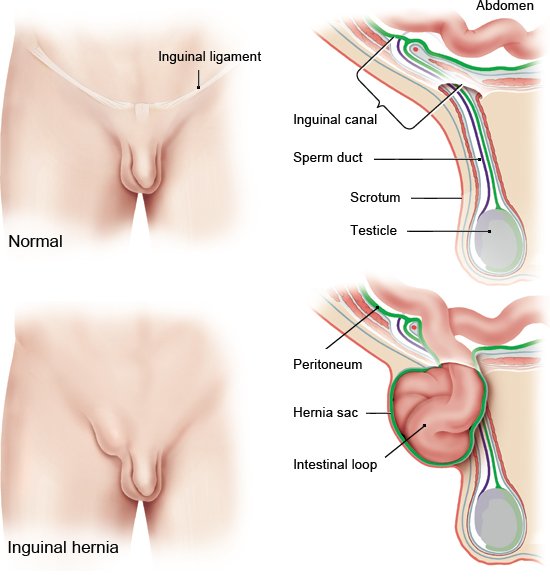Amato B, Moja L, Panico S et al. Shouldice technique versus other open techniques for inguinal hernia repair. Cochrane Database Syst Rev 2012; (4): CD001543.
Berger D. Evidenzbasierte Behandlung der Leistenhernie des Erwachsenen [Evidence-Based Hernia Treatment in Adults]. Dtsch Arztebl Int 2016; 113(9): 150-158.
Emile SH, Elfeki H. Desarda's technique versus Lichtenstein technique for the treatment of primary inguinal hernia: a systematic review and meta-analysis of randomized controlled trials. Hernia 2018; 22(3): 385-395.
Fitzgibbons RJ, Forse RA. Clinical practice. Groin hernias in adults. N Engl J Med 2015; 372(8): 756-763.
Lockhart K, Dunn D, Teo S et al. Mesh versus non-mesh for inguinal and femoral hernia repair. Cochrane Database Syst Rev 2018; (9): CD011517.
Mathes T, Prediger B, Walgenbach M et al. Mesh fixation techniques in primary ventral or incisional hernia repair. Cochrane Database Syst Rev 2021; (5): CD011563.
Mizrahi H, Parker MC. Management of asymptomatic inguinal hernia: a systematic review of the evidence. Arch Surg 2012; 147(3): 277-281.
O'Reilly EA, Burke JP, O'Connell PR. A meta-analysis of surgical morbidity and recurrence after laparoscopic and open repair of primary unilateral inguinal hernia. Ann Surg 2012; 255(5): 846-853.
Patterson TJ, Beck J, Currie PJ et al. Meta-analysis of patient-reported outcomes after laparoscopic versus open inguinal hernia repair. Br J Surg 2019; 106(7): 824-836.
Pisanu A, Podda M, Saba A et al. Meta-analysis and review of prospective randomized trials comparing laparoscopic and Lichtenstein techniques in recurrent inguinal hernia repair. Hernia 2015; 19(3): 355-366.
Simons MP, Aufenacker T, Bay-Nielsen M et al. European Hernia Society guidelines on the treatment of inguinal hernia in adult patients. Hernia 2009; 13(4): 343-403.
Svendsen SW, Frost P, Vad MV et al. Risk and prognosis of inguinal hernia in relation to occupational mechanical exposures - a systematic review of the epidemiologic evidence. Scand J Work Environ Health 2013; 39(1): 5-26.
Treadwell J, Tipton K, Oyesanmi O et al. Surgical options for inguinal hernia: comparative effectiveness review (AHRQ Comparative Effectiveness Reviews; No. 70). 2012.
Wei FX, Zhang YC, Han W et al. Transabdominal Preperitoneal (TAPP) Versus Totally Extraperitoneal (TEP) for Laparoscopic Hernia Repair: A Meta-Analysis. Surg Laparosc Endosc Percutan Tech 2015; 25(5): 375-383.
Yang J, Tong DN, Yao J et al. Laparoscopic or Lichtenstein repair for recurrent inguinal hernia: a meta-analysis of randomized controlled trials. ANZ J Surg 2013; 83(5): 312-318.
IQWiG health information is written with the aim of helping people understand the advantages and disadvantages of the main treatment options and health care services.
Because IQWiG is a German institute, some of the information provided here is specific to the German health care system. The suitability of any of the described options in an individual case can be determined by talking to a doctor. informedhealth.org can provide support for talks with doctors and other medical professionals, but cannot replace them. We do not offer individual consultations.
Our information is based on the results of good-quality studies. It is written by a team of health care professionals, scientists and editors, and reviewed by external experts. You can find a detailed description of how our health information is produced and updated in our methods.


